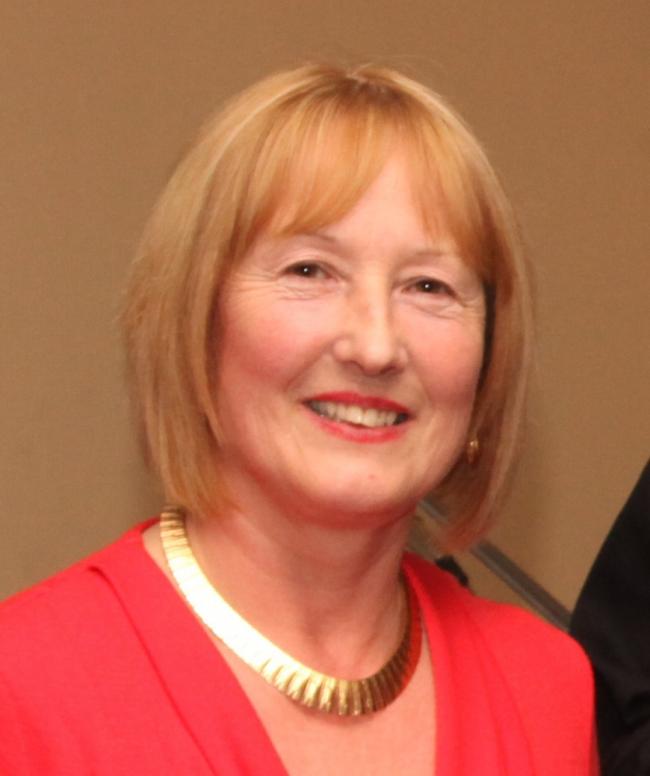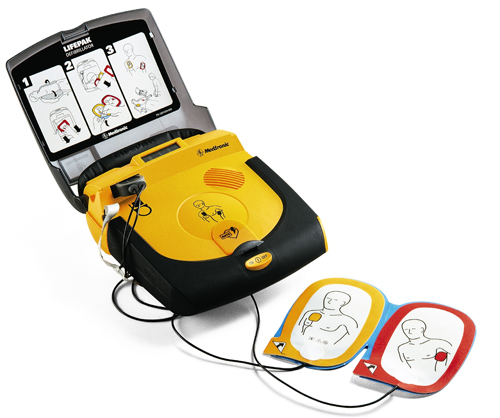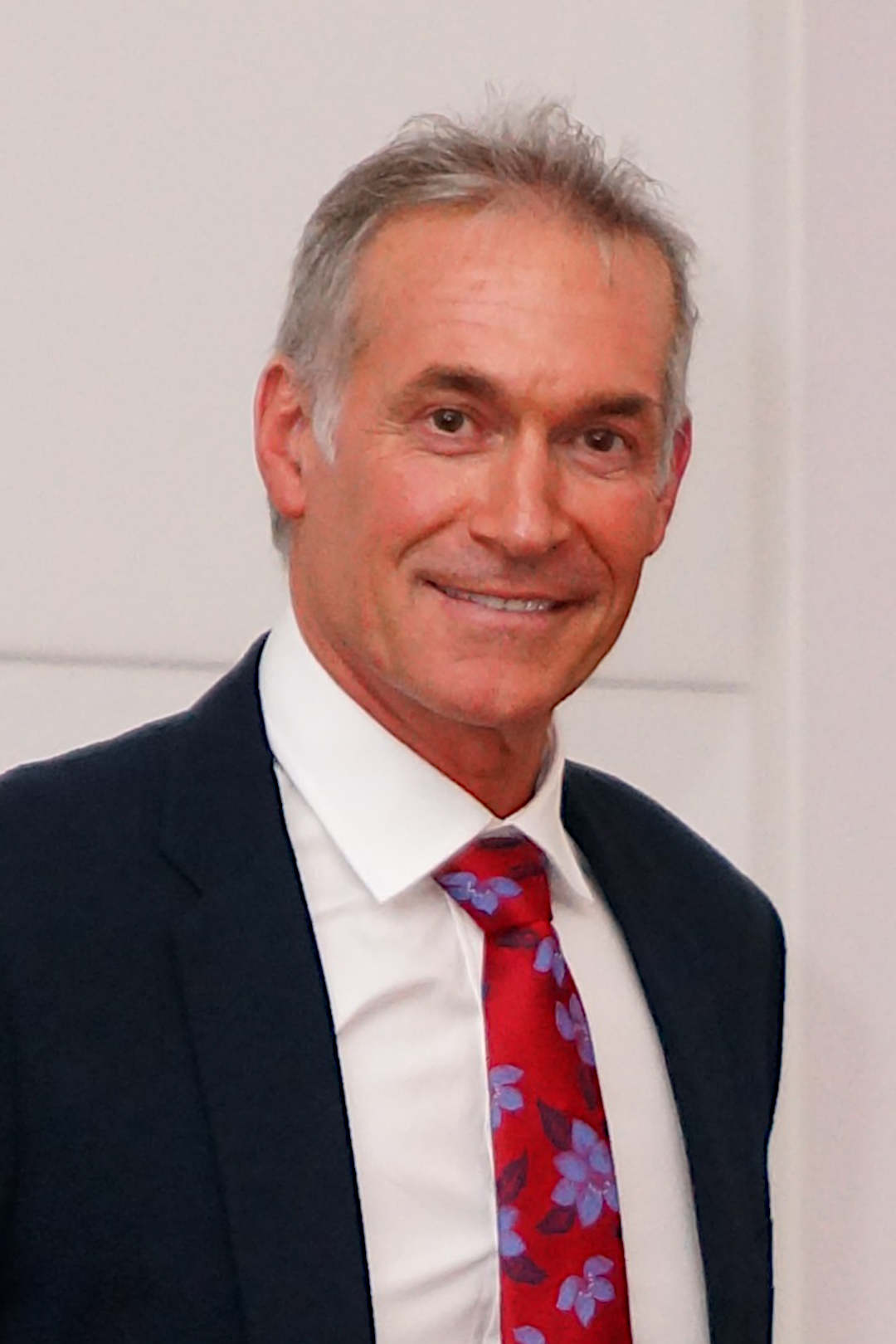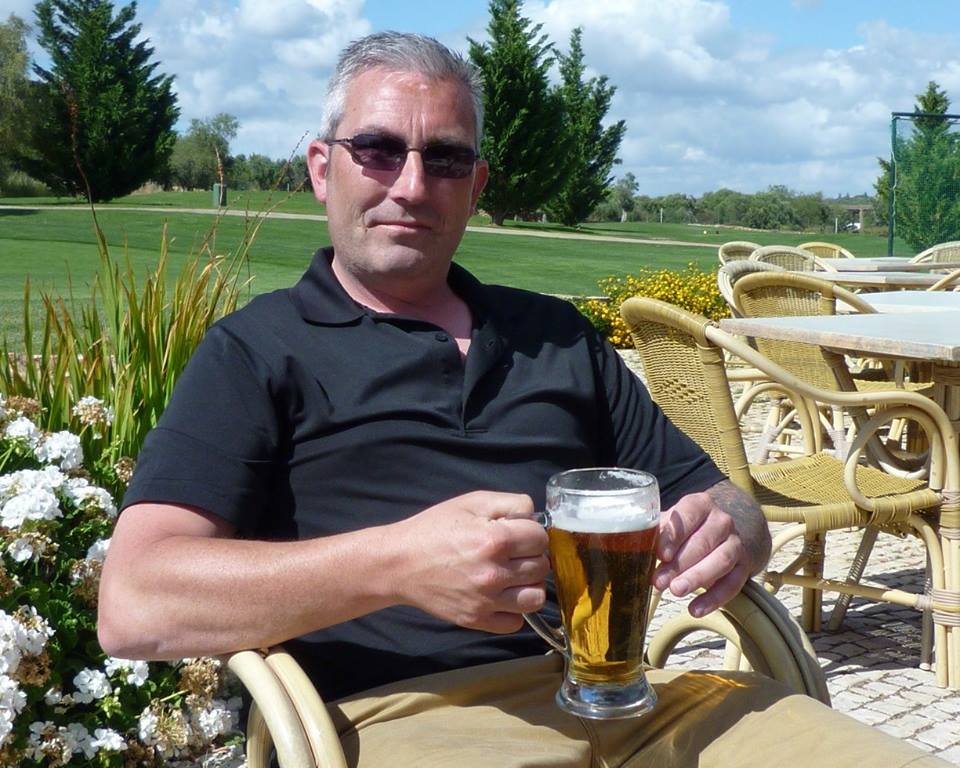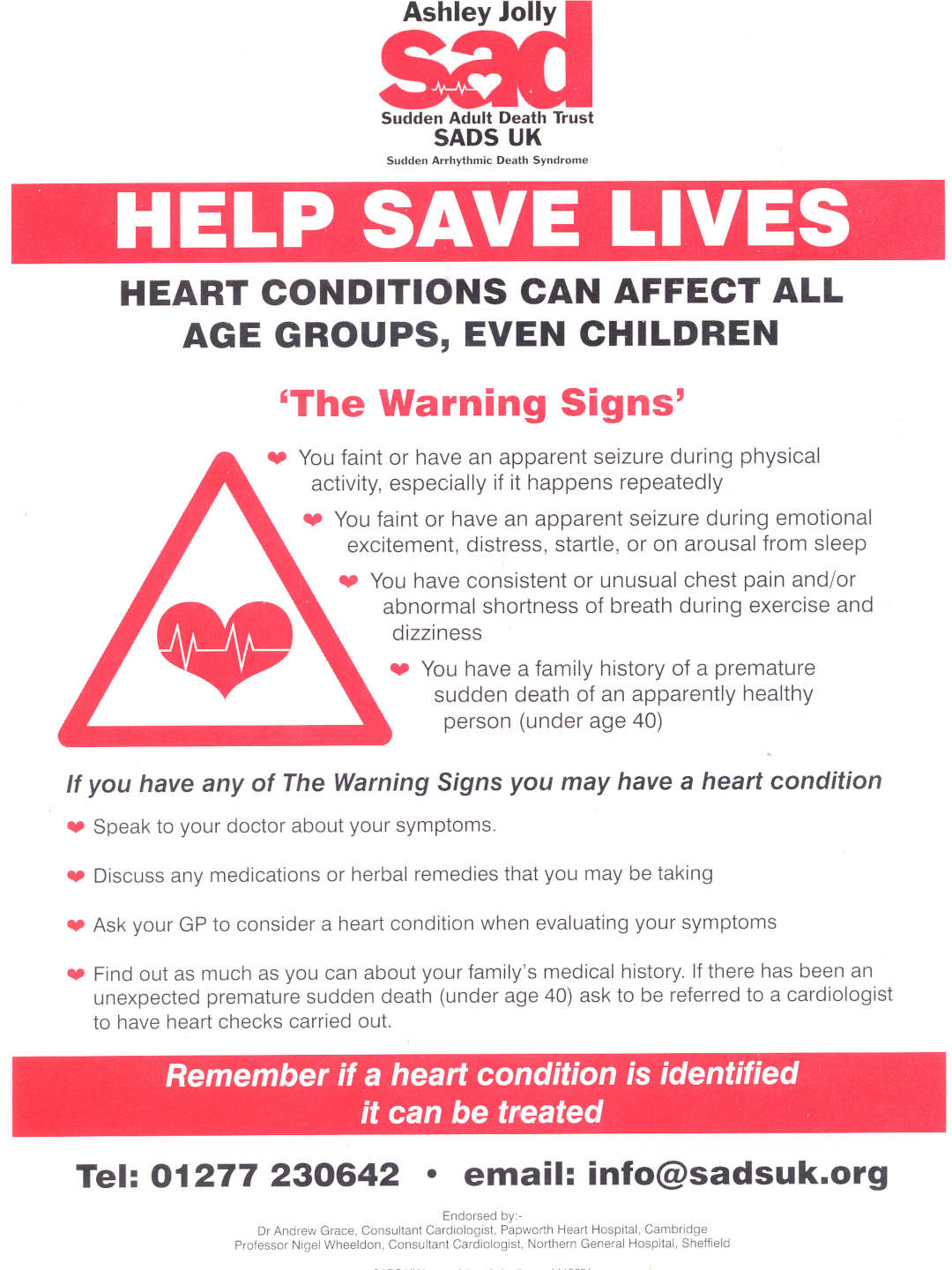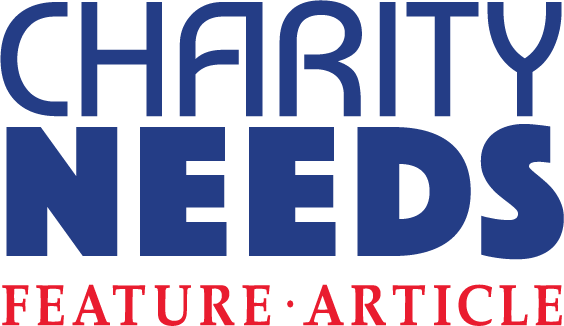Each year all over the world people suffer cardiac arrest in public places.
In the UK alone, between 80,000 to 120,000 people suffer cardiac arrest in a public place.
These are statistics that one British charity is trying to make everyone aware of in pursuit of saving lives.
That organisation is known as SADS UK.
Article written by Hazel Arnold.
SADS is an acronym that stands for Sudden Arrhythmic Death Syndrome. SADS UK is a charity with a powerful message, a message that can affect you, me, your family… anybody, so please take note, especially those seated in the body of British Government. Schools all over the UK need to be supported in a matter that Government should already understand. If you do tread the floors of Westminster, then you are most likely there because you want to effect change, we encourage you to make a change in this area.
SADS is a term that covers cardiac conditions which purely affect the heart rhythm (the electrics of the heart). These conditions can be triggered by emotional stress or by exercise with warning signs such as fainting, irregular heart rhythm or sadly — the one with no warning — sudden death. These conditions can be hereditary and also hard to detect with a normal ECG, often a barrage of tests is employed to identify someone at risk. It can require an expert in the field of SADS to pick it up, and it can take on different forms affecting girls, boys, men and women equally.
If a condition that could cause a Sudden Arrhythmic Death (SAD) is picked up it can be managed by Beta blockers, or in some cases an Implantable Cardioverter Defibrillator (ICD) is also fitted (commonly referred to as a pacemaker); it is a small implantable device that will pace the heart or deliver a shock should the heart go into a dangerous rhythm.
There are many of these conditions including:
Long QT syndrome (LQTS): the most common condition which affects repolarization of the heart after a heartbeat.
Brugada syndrome: a cardiac condition which causes a disruption to the heart’s normal rhythm.
CPVT (catecholaminergic polymorphic ventricular tachycardia): a rare condition mainly associated with two genes that make proteins found inside the cell.
PCCD (progressive cardiac conduction defect): (also known as Lev-Lenegre’s Syndrome) a rare condition.
Short QT syndrome (SQTS): a very rare and poorly understood condition with less than 200 cases of the condition worldwide to date.
Early repolarisation syndrome: Idiopathic ventricular fibrillation (IVF) describes the group of conditions responsible for life-threatening, rapid rhythm disturbances without any signs of the heart diseases described above.
Sodium channel disease: these are very rare and specific sodium channel mutations that can cause Long QT Syndrome, Brugada Syndrome and/or PCCD in the same family.
Wolff-Parkinson-White (WPW) syndrome: is a condition in which there is an extra electrical pathway in the heart which can cause a dangerously fast heart rhythm.
More detailed information about these syndromes are linked at the end of this article in the footnotes, but to go into each condition here is beyond the scope of this article, regardless, if you follow the given links and try to get some in-depth understanding of these conditions, you will know what SADS UK is up against: Trying to convince government that this issue is one which has serious and prominent merit for implementing the life saving measure they most dearly campaign about — Defibrillators in schools and other public places.
If a family member is diagnosed with the condition, then it's wise to get other family members checked out as there is a 50% chance the syndrome could have been passed down.
Anne Jolly (MBE), a title earned through her charitable work campaigning for SADS, founded the charity in 1998 with her husband as a result of losing their son Ashley Jolly at sixteen to the condition.
SADS UK was set up with encouragement from the SADS Foundation in America and SADS UK held the first International SADS Conference in 2002, a two day conference in London which was attended by staff from the SADS Foundation including Alice Lara, Dr Michael G Vincent, (whose laboratory was responsible for discovering the first Long QT genes) and renowned Geneticist Katherine Timothy from Utah who was able to characterise the Timothy Syndrome after meeting families who attended the charity’s conference at the Royal College of Physicians.
Other eminent cardiologists from the UK and Europe attended this ground-breaking conference which ran two seminars in parallel, one for medical professionals and one for families.
SADS UK remains in regular contact with Alice Lara in the USA and meets each year with other countries that are part of SADS International.
Anne explained how it started in her house and has grown bigger over time, eventually moving into the two offices they use today.
The ongoing ‘Big Shock’ campaign that Anne and her team work tirelessly on, is to make Automated External Defibrillators mandatory in schools.
A defibrillator is a portable piece of equipment that can save lives by restarting the heart.
An Automated External Defibrillator (AED) is simple to use with readable and audible step-by step instructions. It gives voice prompts to advise the operator what action to take and tells them how to resuscitate a person who has suffered a cardiac arrest.
It will tell the operator to adhere two sticky pads to the patient’s chest and gives instructions where these should be placed. The defibrillator automatically assesses whether to treat the patient with a therapeutic shock. The equipment needs little training.
As a large section of young people can be affected by the syndrome it would pay dividends to have a defibrillator on hand in schools as well as other public places. This would give anyone who suffered a cardiac arrest a much better chance of survival through time saved.
Initially the defibrillators were only put into schools if a child had been diagnosed with the syndrome and would generally be provided by the parents of a diagnosed child, either through fundraising or donation so they knew their child would be safe at school.
Placing defibrillators in to schools has been challenging, because schools have been reluctant in the past to accept them due to legal issues of use and having a trained person to use them. As technology has progressed, they are now very sophisticated and can, as already stated, detect if the patient is having a cardiac arrest or not, before emitting a charge.
Although little training is needed, anyone can use them with their simple step-by-step instructions, including children themselves.
There has been cause for concern in the past that the audible instructions spoken by the defibrillator do move along too fast for the rescuer to keep in line with. An example of the audible instruction can be heard in the BBC Radio 4 interview with Jake Morrison of The Oliver King Foundation and Anne Jolly of SADS UK.
The International Liaison Committee on Resuscitation (ILCOR) stated several years ago that early CPR and early defibrillation is the most powerful combination in saving lives. Furthermore, The Social Action, Responsibility and Heroism Act 2015 defends anyone using a defibrillator to assist a person in cardiac arrest whatever the outcome. Whatever the outcome, you will have done your best by trying to help and much gratitude would be laid upon you.
SADS UK has currently provided over 3000 defibrillators in schools across the country. In many cases this has been where a person has lost a loved one and it is they who raise funds to help provide defibrillators in public places. The gesture serves a great purpose, gives the fundraiser a sense of wellbeing and becomes a tribute to the lost family member or friend. All these areas can help with the grieving process which can take a long time.
The funds they have to raise for the cost of a defibrillator plus the cabinet is £1,500. One could ask, what price would you put on the lives that, that Defibrillator would or could save… The NHS can tell you that. The British Heart Foundation, who also support SADS and would like to see CPR taught as part of the curriculum in schools, could also tell you that.
The British Government, however, doesn’t deem the subject important enough, yet this could be seen as a valuable life skill to teach children, again not seen as important enough by the British Government. We at Charity Needs Foundation would love to eat our words on this, and so we ask our government to exercise its power, show us that the governing body of our shores does care, by making progressive steps towards such an implementation. We want our government to tell the nation that it does listen, even if it is only to say why it can’t move forward on the subject. Remember that you guys in power are human too, and can be affected by this the same as children, their family members and staff at schools, all of whom could suffer a cardiac arrest at any time.
SADS UK has had many MPs on board to put Defibrillators into schools, but the public support via an ‘e signature’ petition which SADS UK has taken to Downing Street to prove to the government there is a real need for Defibrillators in schools, has dwindled to a standstill.
The problem with government comes in the time taken to process a petition or implement a change in legislation. If this falls into a new government administration, then momentum slows, grinding the process to a standstill, even a renewal, due to new policies. A real help here would be the continuation of a petition in progress, even if a government administration changes, but again that is beyond the scope of this article, links, however, are provided in the footnotes to this parliamentary process.
None of this, however, should take away from the knowledge that there are in fact 20 defibrillators in total on the parliamentary estate as noted by Maria Caulfield MP for Lewes.
They are situated in the House of Lords, House of Commons, Norman Shaw North, Portcullis House and two are even situated in Big Ben.
Therefore, government absolutely know the importance of having a defibrillator nearby…, regardless, that fact leaves a bitter taste of hypocrisy on the tongue and an even greater sentiment of unfairness in the heart. Why such emphasis on the importance of defibrillators around the parliamentary estate and no such urgency in the saving of thousands of lives by the same device for the people in public places?
Such a notion makes one question our Government’s ruling or commitment here, lest we forget, an administration always put in place by the people to act for the people.
It is at these most crucial campaigning times that citizens of this kingdom must stand up and be counted, literally. For it is only by number our government will hear a united voice and the message it carries.
The Oliver King Foundation managed to get their voice heard to an ‘e-petition’ of over 100,000 signings, but the government returned with a disappointing summary. You can read the government response to that ‘e-petition’ at https://petition.parliament.uk/archived/petitions/29399. You will find the live link in the footnotes titled ‘E-Petitions of Note’.
Without a unified voice very little will happen as SADS UK experienced in September 2018. The ‘e-petition’ (https://petition.parliament.uk/petitions/213821) activated by SADS UK found no traction, only achieving 1038 signings at the release of this article. This, however, is mainly due to public awareness. Without a promotion and marketing drive charities find it hard to get their message across, in such cases as these, charities need your united voice sounding its support. The Oliver King Foundation may have gained some traction with their ‘e-petition’ because of the cardiac arrest event that unfolded with footballer Fabrice Muamba (detailed below), which had worldwide publicity across all media types, and was around the same time as this petition.
With that, we ask you to contact SADS UK, hand them your details so that when they put another defibrillator campaign before parliament, they will have the weight of your support behind them unified as one by sheer strength of numbers. Your support will mean equally the same to all the other charities that campaign for defibrillators on behalf of SADS syndrome and cardiac arrest in public places. A successful outcome will be a triumph for all, you, me, the charities… everyone.
SADS UK Patron Dr Hilary Jones, who came to prominence through GMTV in the 90’s and currently seen on Good Morning Britain, passionately supports defibrillators in schools; Dr Jones says, ‘Defibrillators have already saved many young lives in schools fortunate enough to have them and they are just as potentially life-saving for the teachers and parents present as well. They are easy and safe to use and should no longer be seen as complicated bits of medical kit that only paramedics and clinicians are confident using. I fully support SADS UK’s Big Shock Campaign to provide a defibrillator in every school in the certain knowledge that this will make a huge difference in the future in avoiding as many preventable tragic outcomes as possible.’
Dame Helen Mirren also lends her support to the Campaign saying,’ I support the SADS UK Big Shock Campaign to make defibrillators mandatory in schools. It is particularly tragic to hear of young people dying of cardiac arrest. I understand how important it is to defibrillate a person in cardiac arrest as quickly as possible to give them the best chance of survival. It makes sense that all schools should have this life-saving equipment in place.’
SADS UK’ campaign doesn't stop there, when a young person dies from this condition, SADS UK offers support and information to families who have suffered a loss to SADS. They help family members through the bereavement of a loved one giving support and understanding.
Anne explained from her own experience as well as listening to others, that everyone deals with loss in different ways. It can be difficult for family members to share their grief with each other as it comes at different times. The last thing they want to do is to offload onto another family member that seems to be OK and moved on.
With this in mind SADS UK organises bereavement counselling for family members that are struggling to come to terms with their loss.
They also run a three day retreat once a year where they light candles, release balloons, and have a lay preacher attend the retreat to say a few words. Talks are given from those that are further along the grieving process to offer comfort, support and understanding.
There is support also for those that have survived a cardiac arrest which can make them feel vulnerable, leaving them with concerns and worries about their families if anything should happen in the future.
For anyone who thinks they may be affected in any way or there is family history that may indicate a SADS problem, it's always best to get it checked out.
Although SADS refers to Sudden Arrhythmic Death Syndrome, in the media, however, it is sometimes refers to as ‘Sudden Adult Death Syndrome’; or SADS is used for referring to the more general notion of a sudden death of an apparently fit and healthy young person.
It is thought that cot death – sudden infant death syndrome, or SIDS – may be partly due to the same causes as SADS.
In about 1 in every 20 cases of sudden cardiac death and up to 1 in 5 young sudden cardiac deaths, no definite cause of death can be found, even after drugs have been excluded and an expert cardiac pathologist has examined the heart for structural abnormalities. In such cases, the death will be attributed to sudden arrhythmic death syndrome (SADS).
To have you understand the magnitude of what a Defibrillator can do for someone undergoing a cardiac arrest, take the example of Fabrice Muamba (Bolton Wanderers football player), who had a cardiac arrest in front of thousands of live supporters at the Tottenham Hotspurs football ground and millions watching at home live on their TV sets 17th March 2012. It was a defibrillator at the Tottenham ground that administered the shocks Fabrice needed to keep him alive and without that quick access to such a vital piece of life saving equipment, people at the quarter final FA Cup tie may not have been able to save Fabrice’s life and for him to tell his tale. Hear him tell that tale with Gary Lineker and Andrew Deaner, the Cardiologist Specialist Doctor that saved him. A very educational film covering all aspects of this article.
This article has been written in loving memory of Matt Evans who was taken by SADS in 2013 on Christmas night, he was a friend of twenty years to Ian Russell a Charities Liaison Officer at Charity Needs Foundation. Matt and Ian were both members of Fleetlands Golf Club, Fareham Road, Gosport, Hampshire, PO13 0AW, so every year since then they have held a day in memory of Matt to raise funds for the charity SADS UK, which has always been a great success.
Please show your support to the SADS UK organisation and encourage the British Government to get behind the great work that they are doing.
Sign the latest “e petition” here: https://petition.parliament.uk/petitions/213821
Wouldn't you like to know that there is yet another safety net looking out for your life, if and when needed?
I know I would.
This page is embeddable, click for code
Head/Cover picture by: Head image by: sadsuk.org.uk
Head/Cover image description: <p>The team who run the administration of SADS UK. <br /> (Left to right) Martin & Ann Lillis (Trustees), John & Anne Jolly MBE. Sarah French and Andrea Patient from SADS UK.<br /> Also pictured (but not part of the SADS UK organisation) is Dr. Christian Jessen; Christian Spencer Jessen is a British doctor, television presenter and writer, best known for presenting Channel 4 programmes such as Embarrassing Bodies and Supersize vs Superskinny.</p>
Article written by: Hazel Arnold
Article edited by: Jonathan Fleming
Article Length: Words count is 2961 from 17507 characters
Released — 23-10-2018 - 12:36
Modified — Never
Closing Credits from CNF:
@Anne Jolly:
Thank you Anne for giving us your precious time and allowing us to present this article for you.
@SADSUK Team:
It was a pleasure and an honor meeting you all to see the level of work you do on a daily basis for your campaigns.
Footnotes:
SADS UK Founder:
Mrs. Anne Jolly Founder and Manager, Sudden Adult Death Trust UK. For services to Raising Awareness of Sudden Arrhythmic Death Syndrome A Member of the Order of the British Empire ( MBE ) is awarded for a significant achievement or outstanding service to the community. An MBE is also awarded for local 'hands-on' service which stands out as an example to other people.
-
Causes of SADS:
- The cardiac channelopathies / arrhythmia syndromes are a group of relatively rare diseases that affect the electrical functioning of the heart without affecting the heart’s structure. They are often the cause of a SADS death. There are several different types of ion channelopathies, including:
- Long QT syndrome (LQTS): is the most common and best understood type of channelopathy. It occurs in about 1 in 5,000 people. In 70% of people with LQTS, gene testing can identify the ion channels involved. In most cases, two of the potassium channels that regulate the movement of potassium ions from the inside to the outside of the cell are affected. This can be reversed in a small number of people from the outside to the inside of cells is affected.
- Brugada syndrome is a cardiac condition which causes a disruption to the heart’s normal rhythm. Specifically, this disorder can lead to irregular heartbeats in the heart’s lower chambers (ventricles), which is an abnormality called ventricular arrhythmia.
- CPVT (catecholaminergic polymorphic ventricular tachycardia) is a rare condition mainly associated with two genes that make proteins found inside the cell – the human ryanodine receptor (a calcium ion channel) and calsequestrin (a protein that interacts with the calcium channel). These regulate the release of calcium ions into the rest of the cell. If these do not function normally, the level of calcium inside the cell becomes too high, resulting in arrhythmias.
- PCCD (progressive cardiac conduction defect): (also known as Lev-Lenegre’s Syndrome) is a rare condition. In people with PCCD, the heart’s electrical impulses are conducted very slowly and this results in the gradual development over time of heart block. Heart block is a failure of the heart’s electrical impulse to conduct properly from the top chambers (the atria) to the bottom chambers (the ventricles). The severity of the condition and its associated risk can vary.
- Short QT syndrome (SQTS) is a very rare and poorly understood condition with less than 200 cases of the condition worldwide to date.
As the name suggests the QT interval in carriers is shorter than normal, which means that the heart takes a short time to repolarise or reset itself.
People with this condition can sometimes develop ventricular arrhythmias, as well as less dangerous heart rhythms from the top chamber of the heart (atrial fibrillation). - Early repolarisation syndrome: Idiopathic ventricular fibrillation (IVF) describes the group of conditions responsible for life-threatening, rapid rhythm disturbances without any signs of the heart diseases described above. In some of these patients, changes on their ECG known as early repolarisation, have been seen. This has become known as early repolarisation syndrome and in a few cases mutations of potassium and calcium ion channel genes have been found. Early repolarisation can, however, be seen on the ECGs of many normal healthy people. The diagnosis and treatment of this condition is therefore still unclear but an ICD is needed in patients who have suffered a cardiac arrest.
- Sodium channel disease: There are very rare and specific sodium channel mutations that can cause Long QT Syndrome, Brugada Syndrome and/or PCCD in the same family. They can be diagnosed and treated as described above and can be identified by genetic testing.
Less frequently, SADS can be caused by other cardiac abnormalities, such as extra electrical pathways or even subtle heart muscle disease (cardiomyopathies).
The full detailed version of these syndromes that identify signs, symptoms, diagnoses and treatments can be read at: Causes of SADS: https://www.sads.org.uk/causes-of-sads/
Don't Be Confused By SAD:
SADS should not be confused with SAD (Seasonal Affective Disorder).
See explaination by Mind (the mental health charity) at https://www.mind.org.uk/information-support/types-of-mental-health-problems/seasonal-affective-disorder-sad/sad-symptoms/#.W2zqcthKjOQ
And by the NHS at https://www.nhs.uk/conditions/seasonal-affective-disorder-sad/
E-Petitions of Note:
By Oliver King Foundation: https://petition.parliament.uk/archived/petitions/29399
By SADS UK: https://petition.parliament.uk/petitions/213821
What is a defibrillator?:
See: http://sadsuk.org.uk/newsite/home-aed/101-what-is-a-defibrillator
SADS US:
SADS UK also works with the SADS Foundation, American who are: The Sudden Arrhythmia Death Syndromes Foundation EIN: 87-0492100 | Salt Lake Cty, UT, United States Tel:. 01277 811215 E-Mail info@sadsuk.org IRS Regulator details page: IRS Details for The Sudden Arrhythmia Death Syndromes Foundation in the USA
SADS UK Team:
The SADS UK Team: Sarah French (Raising Awareness & Fundraising Manager), Andrea Patient (AED Project Manager.) and Anne Jolly (Manager & Founder)
The Big Shock Campaign:
The ‘Big Shock’ Campaign: http://sadsuk.org.uk/newsite/component/content/article/1-latest-news/146-big-shock-campaign-
What to Do When A Cardiac Arrest Is Happening:
If you or someone you’re with has chest discomfort or other heart attack symptoms, call your emergency services right away. Unless you can't reach the emergency services or have no other choice, don’t drive yourself or the victim to a hospital. While your first impulse may be to drive yourself or the heart attack victim to a hospital, it’s better to wait for an ambulance. Emergency medical services personnel can start treatment on the way to the hospital. They’re also trained to revive a person if their heart stops. Nowadays, emergency instruction is given by the emergency phone operator that can be carried out by yourself whilst an ambulance is in transit. Meanwhile, if a defibrillator is on site or accessible, tell the emergency service operator and they may be able to guide you or help with the instruction of how to use it. Many people delay treatment because they doubt they are having a heart attack. They don't want to bother or worry their friends and family., but you should always err on the side of caution, It’s always better to be safe than sorry. See also this NHS page: https://www.nhs.uk/conditions/heart-attack/symptoms/ And this British Heart Foundation page: https://www.bhf.org.uk/informationsupport/conditions/heart-attack
Beware that there is a difference between the following two organisations / website URLs:
ie. sads.org.uk (part of CRY) which does not have anything to do with sadsuk.org.uk (SADS UK). They are not linked in any way. Cardiac Risk in the Young (CRY) did register their domain before SADS UK, but it is possible their site may not have been in operation before SADS UK. Unfortunately with similar names and campaigns this can cause confusion. The domain sads.org.uk was registered 31st January 2004 (http://whois.domaintools.com/sads.org.uk) The domain sadsuk.org.uk was registered 21st January 2011 (http://whois.domaintools.com/sadsuk.org.uk)
Government Department affecting SADS:
These links are through the SADS UK website: Gov Departments: http://sadsuk.org.uk/newsite/govdepart
Parliament: http://sadsuk.org.uk/newsite/parliament
Instructions On An Automated External Defibrillator (AED):
Defibrillator instructions — These are instructive prompt you may hear emitted from a defibrillator:
-
Open lid – defibrillator beeps
-
Choose mode according to patient eg. Adult mode, Child mode etc. (the defibrillator will provide an audible sound prompt to tell you the mode it is in)
-
(rescuer interaction required) “Remove all clothing from patient’s chest”
-
(rescuer interaction required) “Pull red handle on defibrillator and remove pads”
-
(rescuer interaction required) “Apply pads to bare skin exactly as shown in the pictures on defibrillator”
-
(rescuer interaction required) “Press pads firmly onto chest of patient”
-
“Do not touch patient”
-
“Analysing heart rhythm”
-
“Preparing to shock”
-
“Everyone stand clear”
-
“Do not touch patient”
-
“Delivering shock”
-
“Shock delivered”
-
(rescuer interaction required) “Provide chest compressions to the beat – audible beeps“
-
(defibrillator sound prompt — interaction required) “The heel of the hand should be in centre of chest, the other hand should be on top of first hand”
-
(defibrillator sound prompt — interaction required) “Push down hard at least 5cm”
-
(defibrillator sound prompt — interaction required) “Lean over the patient, keep elbows straight, use body weight to push”
-
(rescuer interaction required) “Push down hard at least 5cm”
-
“You have one minute to go”
-
“Remember to push hard”
-
“Push down hard at least 5cm”
-
(rescuer interaction required) “Stop chest compressions, do not touch patient”
-
“Analysing heart rhythm”
-
(rescuer interaction required) “Everyone clear, do not touch patient”
-
“Delivering shock”
-
“Shock delivered”
-
(rescuer interaction required) “Resume chest compressions”
-
